Social Media Likes to Business Leads: Top Tactics Revealed

Social media is everywhere these days. While it’s a fantastic place to stay entertained and get those dopamine levels up, it can also be a powerful asset for small businesses looking to make their mark.
With countless users scrolling and engaging daily, social media is a goldmine for attracting traffic and growing your brand. But with so many people online, posting sporadically without a plan might not be enough.
You need a well-thought-out strategy to stand out. That’s exactly what we’re here to help you with—creating a smart social media strategy to get your business noticed and build real connections with your audience.
Imagine transforming casual scrollers into brand fans, loyal customers, and a steady stream of business leads. It’s a challenge, but we’re here to guide you every step of the way!
What is Social Media Marketing?
Social media marketing is the practice of using social platforms to promote your brand, connect with your audience, and grow your business. It involves creating and sharing content that captures your audience’s interest, starting conversations, and building a community around your brand.
The key parts of social media marketing are:
- Audience: Know who they are, their interests, and where they hang out online.
- Clear Goals: Define success, like growing followers, boosting sales, or building brand awareness.
- Platforms: Focus on where your audience spends their time.
- Content: Create content that is genuine, grabs attention, tells a story and sparks interaction.
- Engagement: Actively participate in conversations and respond to followers.
- Tracking and Adapting: Regularly assess performance and adjust your strategy based on data.
When you mix these elements together, social media marketing becomes an exciting way to strengthen your brand’s presence and connect with your audience online. Let’s get those likes turning into leads!
Why Social Media Is Great for Small Business Marketing
You’re scrolling through Instagram when a cozy coffee shop story grabs your attention. A barista is crafting beautiful latte art, and the caption invites you to try their new seasonal blend. Intrigued, you click on their social media account, explore their menu, and read glowing reviews. Just like that, you’ve discovered your next coffee spot.
Now, think back to a time before social media. Small businesses relied heavily on word-of-mouth, flyers, and local ads to get noticed. It was a slow and often expensive process to reach new customers. Fast forward to 2025, and more than 40% of consumers use social media as a discovery engine, according to WeAreSocial, making it an essential tool for businesses to connect with new audiences.
Today, the landscape has been transformed, with a whopping 5.41 billion people using social media, according to Statista. That’s about 65.7% of the global population, ready to connect and engage with your brand.
While your website acts as your business’s backbone, providing the depth and detail your target audience needs, social media is where you “meet” and engage with them, creating meaningful connections and sparking interest.
Whether you’re just starting out or looking to expand your reach, social media provides powerful tools you need to make an impact. Now, let’s dive into why social media is a must for small businesses!
Get Your Free Social Media Planning Template Plan with purpose and post with confidence
Google reCAPTCHA used. Privacy Policy and Terms of Service apply![]()
Stretch Your Budget
Let’s talk about one of the biggest perks: cost-effectiveness.
Social media is like a digital marketing superhero for small businesses. Unlike traditional advertising, which can burn a hole in your pocket, platforms like Facebook, Instagram, and TikTok let you reach a massive audience without spending a fortune.
You can start small, with just a modest budget, and still see impressive results.
Expert tip: If you’re cautious about budgeting and paid ads, start small with your first Meta ad. Even with a daily budget of $5 to $10, you can effectively test the waters without financial strain. As you gather insights, gradually increase your budget by 10% to 20% to scale successful marketing campaigns.
Increase Brand Awareness and Growth
Social media is a fantastic tool for building brand recognition and reaching new audiences. With the ability to share your story, showcase your products, and engage with followers, you can create a strong brand presence.
One of the great advantages is the ease of targeting specific audiences. The advanced targeting options allow you to reach the people most likely to be interested in your products or services. And with Facebook and Instagram now showing up on Google searches, your brand’s visibility is even greater.
As your content gets shared, liked, and commented on, your brand’s reach extends, bringing in new potential customers who might not have discovered you otherwise.
When selecting your target audience, decide whether to go broad or keep it niche. A wide net works for crowd-pleasers, while targeting specific groups can boost engagement and conversions. Adjust age, location, interests, and behaviors to find your ideal match.
Tip for small businesses: Think local!
Local targeting is essential for getting your brand noticed. Start by using location tags and teaming up with local influencers to make your presence felt in the community.
Don’t forget to turn on Meta’s reviews feature—positive feedback can really build trust and draw in new customers. Also, think about partnering with nearby businesses and sponsoring local events.
Improve Customer Engagement and Service
One of the coolest perks of social platforms is getting to chat directly with your customers. It’s your go-to spot for answering questions, tackling feedback, and offering support on the fly. This kind of real-time interaction builds customer loyalty because, let’s face it, customers love businesses that actually listen and respond to what they need.
Grow Your Business and Increase Sales
And hey, social media isn’t just about collecting likes and shares. Running smart, targeted ads and offering exclusive promotions can guide followers along the customer journey, while engaging directly with your audience builds trust, transforming them into actual customers.
How to Craft a Social Media Strategy for Your Small Business
So we’ve covered the whys of crafting a social media marketing strategy for your small business, now let’s look at the hows. Building a social media presence is about understanding your target audience, setting clear goals, and using the right tools and tactics to make your brand shine.
A key part of this process is the STP framework—Segmentation, Targeting, and Positioning. This marketing approach helps businesses identify specific customer segments, target them effectively, and position their products or services to meet those needs.
With the STP marketing framework in mind, let’s jump into the steps to create a winning strategy.
Step 1: Understand Your Audience
Now, back to basics—or in our case, back to the audience. Getting to know your target demographic and their preferences is key. Dive into what makes them tick—their interests, behaviors, and needs—so you can create content that really clicks. This insight helps you connect with them on a personal level, making your brand feel more relatable and relevant.
This isn’t just about what you like; it’s about stepping into your customers’ shoes and discovering what they love. Think about their daily challenges, what excites them, and how your products or services fit into their lives. The more you understand these details, the better you can craft messaging that’s consistent, genuine, and builds a bond with your audience.
Also, think about the content they enjoy—do they prefer fun or inspirational posts, aesthetic videos, or quick tips? Creating content that feels authentic and relatable is key to social media marketing success.
Another quick tip: Create a customer persona to give things a more tangible feel. Think of it as a fictional character that represents your ideal customer. Include details like age, interests, challenges, and shopping habits. This way, you can shape your content and messaging to better connect with your audience.
Step 2: Set Clear Goals
Now that you understand your target audience, it’s time to determine what you want to achieve with your social media efforts. Step two focuses on setting goals that align with your small business objectives and can make the most impact.
Setting clear goals is crucial because it provides direction and a way to measure success. To do this effectively, use the SMART framework: Specific, Measurable, Achievable, Relevant, and Time-bound.
Whether you’re aiming to grow your follower count, increase engagement, or drive sales, having these well-defined goals keeps your strategy effective. Your goals should align with your business needs, connect with what your target audience is after, and fit the current market scene.
Here’s a solid example of a social media marketing goal for a small business using the SMART framework:
Your goal: Aim to boost online sales by 20% through Instagram over the next three months.
- Specific: Focuses on increasing sales via Instagram.
- Measurable: Includes a 20% target.
- Achievable: Realistic based on current sales data and market trends.
- Relevant: Aligns with the business’s need to grow revenue using Instagram’s visual platform.
- Time-bound: Has a three-month deadline.
Your SMART goal formula:
Aim to [specific action or result] by [measurable target] through [platform or method] over [time period].
Just keep in mind : Don’t stress if you don’t hit your goals right away. Sometimes it takes longer than expected, or the goals might be too ambitious. If you don’t reach your targets initially, take the time to analyze and adjust your strategy accordingly.
Step 3: Analyze Competitors
Next, it’s time to see what your competitors are doing on their social media channels. Start by identifying your main competitors and following their accounts. Look at their strengths and weaknesses to spot gaps and opportunities for your own strategy. Analyze the type of content they post, how often they post, and the level of engagement they receive.
To make this process easier, use tools like social media analytics to track their performance and see which platforms they favor. social media analytics to track your performance and identify which platforms your audience prefers. Several platforms offer built-in analytics to help refine your strategy:
LinkedIn: Use LinkedIn Analytics to track post engagement, follower demographics, and page views. The “Companies to Track” feature allows you to compare your LinkedIn page’s performance with similar companies, helping you identify trends and areas for improvement.
Facebook: Access Facebook Insights to gain insights into post reach, engagement, and audience demographics. The “Pages to Watch” feature lets you monitor competitors’ activity and engagement, providing valuable context for your strategy.
Instagram: Instagram Insights, available for business and creator accounts, provides data on post performance, audience demographics, and follower activity. While Instagram doesn’t offer direct competitor comparison, you can manually track competitors by observing their engagement rates, content strategies, and follower growth.
TikTok: Although TikTok doesn’t offer direct competitor comparison, TikTok Analytics provides data on video performance, audience demographics, and follower growth, helping you understand what content connects with your audience.
For instance, if you run a local bakery and notice a competitor gets a lot of engagement with behind-the-scenes baking videos, it might mean there’s a strong interest in that type of content. You could then create your own unique spin on it, like sharing a weekly baking tip or showcasing customer stories, to stand out and engage your followers.
Step 4: Choose the Right Platforms
Choosing the right platforms brings us back to your target audience. Social media isn’t a one-size-fits-all solution, so it’s really important to pick platforms that align with your business goals and where your audience is most active.
While every platform can be used for various marketing goals, the primary consideration should be where your audience spends their time. Align your platform choices with both your business goals and audience preferences for the best results.
Consider what each platform offers in terms of audience demographics and user intentions.
For instance, Instagram is especially popular with millennials and Gen Z, who use it to follow lifestyle and fashion content. LinkedIn, on the other hand, attracts more Gen X and older millennials, making it ideal for B2B networking and professional connections. TikTok skews toward Gen Z and younger millennials, where entertainment and viral trends dominate. TikTok is a hit with Gen Z and younger millennials, often used for entertainment and viral trends.
By now, you’ve done the legwork with your SMART goals and competitor research, which should give you a pretty good idea of which platforms will hit the mark for your market.
For example, if you own an online store selling handmade summer bracelets and are targeting Gen Z and millennials, Instagram and TikTok are ideal platforms for your brand due to their visual nature and younger user base.
On the other hand, if you’re a freelancer offering product photography services, incorporating LinkedIn into your social media strategy is essential for reaching professionals and showcasing your work to potential clients.
Pick platforms that play to your brand’s strengths and vibe with what your audience loves to really make an impact.
Step 5: Plan and Schedule Your Content Strategy
Staying consistent is super important for online presence. To keep things on track, try setting up a content calendar to plan and schedule your social media posts. This way, you’ll have a steady stream of content and can stay active with your audience. Plus, it makes managing everything way less stressful.
You can make life even easier by using AI tools for business to help with scheduling. These resources can automate your posts so you can focus more on creating standout content and chatting with your followers.
🎯 Have you heard of the 60/20/20 rule for social media?
It’s a handy guideline for balancing your content strategy—60% educational or helpful content, 20% brand-building or personality-driven posts, and 20% promotional material.
This way, you can build trust and keep your audience coming back with valuable insights, show off your brand’s vibe with personal touches, and still spotlight your products or services without feeling like a pushy salesperson. Why not give it a whirl and keep your social media game fresh and exciting?
Step 6: Analyze, Refine, Repeat
Now that your content is live, it’s time for the last step: evaluate its performance. Use analytics to track the success of your social media marketing efforts. Pay attention to what’s working and what’s not, and be ready to make adjustments.
This cycle of analyzing, refining, and repeating is crucial for continuously improving your strategy and getting better results over time. Whether it’s tweaking your content style, posting frequency, or platform choice, staying flexible and responsive to your analytics will keep your social media game strong and effective.
Hot Trends To Keep in Mind
With a solid strategy in place, it’s time to amp up the excitement by exploring the latest trends. A big part of your strategy is staying up to date with what’s cool and current. You don’t want to be the awkward old-school one still clinging to outdated tactics.
As we cruise through 2025, it’s the perfect moment to sprinkle some buzz into your approach. Let’s explore the key trends to watch this year!
Short-Form Video Content
Short-form video content is still king, with platforms like TikTok and Instagram Reels leading the charge. But it’s not just TikTok anymore—platforms like YouTube (with Shorts) and Facebook (with Reels) are also embracing this trend” or “But it’s not just TikTok anymore—other platforms, including YouTube and Facebook, are jumping in with their own versions: Shorts and Reels.
These quick, engaging clips are perfect for grabbing attention and delivering content that connects. Whether you’re highlighting products, sharing quick tips, or creating fun challenges, short-form videos remain a vital part of your content strategy.
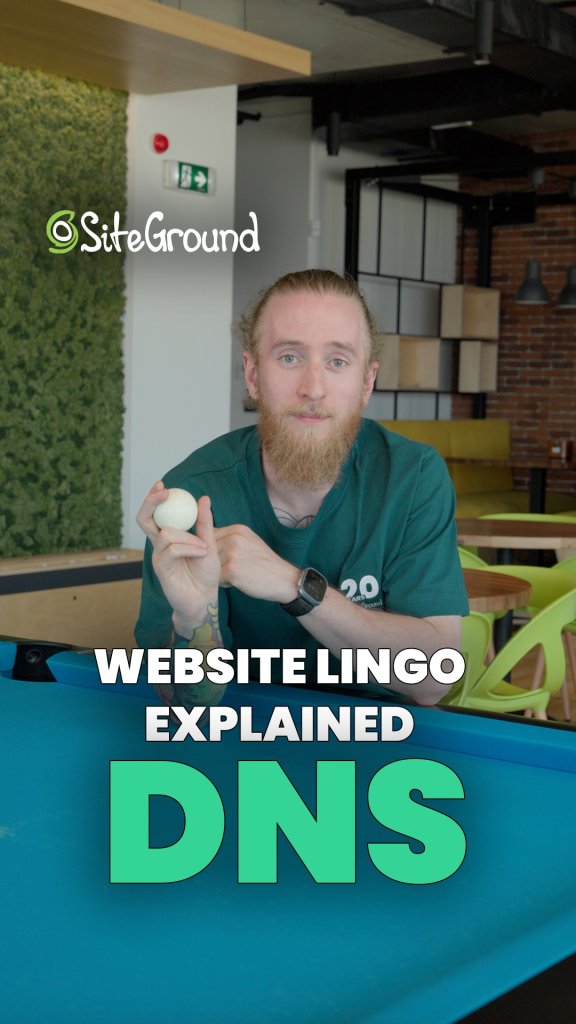
Community Building
Building a strong community around your brand is more important than ever, especially for small businesses. It’s all about creating a sense of belonging and turning your audience into loyal fans.
Use platforms like Instagram to send direct updates through Broadcast Channels, or create Facebook Groups for more personal hangouts. Hop on Twitter Spaces or Facebook Live for real-time chats, and dive into TikTok challenges to keep things fun and engaging. These tools help you build a loyal tribe that sticks with you and helps your brand shine in a crowded market.
And hey, who doesn’t love scrolling through their feed on the way home and finding a post that makes them giggle? A little humor goes a long way!

Influencer Marketing
Influencer marketing might not be the newest trick in the book, but it’s still got some serious magic. The real charm lies in how it creates a sense of credibility and authenticity. You don’t need to work with mega influencers with millions of followers.
Connecting with creators who have a smaller audience but maintain genuine, constant communication can be just as effective, as they often build a stronger, more engaged community around them. t comes down to picking influencers who truly connect with their followers and reflect what your brand stands for.
For most small businesses, this is like hitting the jackpot. You get to reach new audiences without needing a huge budget. Plus, when people see someone they trust raving about your product, it feels way more genuine than a regular ad. This example of a social proof can significantly boost your brand’s credibility.
So, take your time to find influencers who get what you’re all about, and let them help spread the word about your brand.
Authenticity
Speaking of authenticity, it’s a big deal in 2025, and for good reason. Social media users are fed up with overly polished content and crave genuine connections. They want to see brands being real and transparent. This trend is all about showing the human side of your business—sharing behind-the-scenes moments, user-generated content, and real stories.
For small businesses, embracing authenticity can definitely build deeper connections with your audience. Plus, it takes the pressure off needing perfect photos or flawless posts. So, let your true colors shine and connect with your audience on a more personal level.
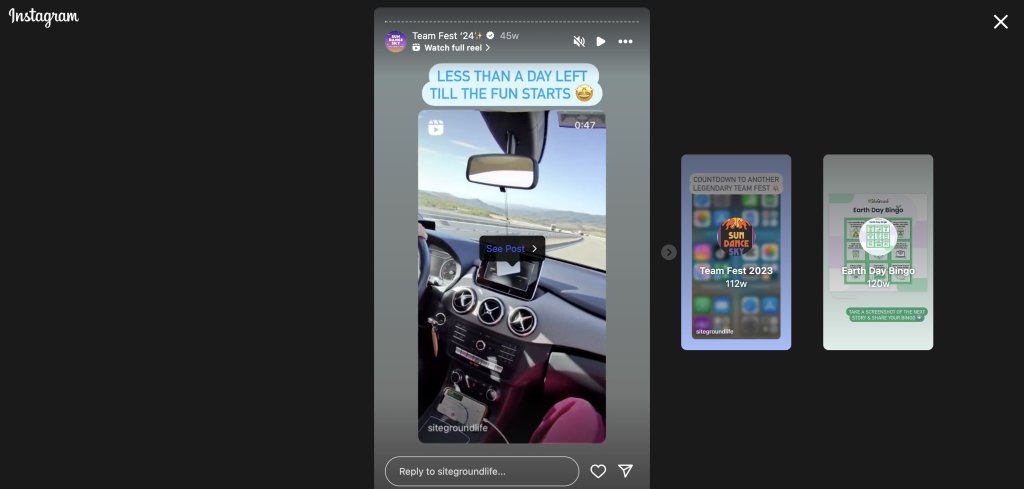
Social Commerce
Social commerce is revolutionizing the online shopping scene, making it super easy for consumers to buy directly through social media platforms. With features like in-app checkout and shoppable posts, users can discover and snag products without ever leaving the app.
In fact, in 2024, Instagram’s social commerce revenue is estimated to exceed 37 billion U.S. dollars, highlighting the massive potential of this trend. As we gear up for the Black Friday rush, it’s crucial to stay on top of BFCM trends.
For small business owners, this means a fantastic opportunity to reach customers where they already spend a lot of time. Make sure your product catalog is set up for shoppable posts, and consider running special promotions or exclusive deals to entice shoppers.

Great Website + Social Media = Your Winning Combo
Here’s the deal: Social media is a treasure trove for small businesses. Understanding your audience, setting clear goals, and choosing the right platforms, will help you turn those casual scrollers into loyal customers. Embrace trends like short-form videos and authenticity to keep things lively and engaging.
However, no matter how viral (fingers crossed!) your content on social media becomes, you still need a website. It’s your business’s home base. Having a website means your audience can visit to learn about all the services or products you offer, which helps build credibility and trust in your brand.
Ready to level up your small business? Start by creating an outstanding website. With the SiteGround Website Builder, you can easily design a professional, user-friendly site that complements your social media strategy perfectly.
So, dive into the world of social media and watch your business thrive. With the SiteGround Website Builder, your website and social efforts will work together seamlessly, creating a full circle that boosts your business growth.
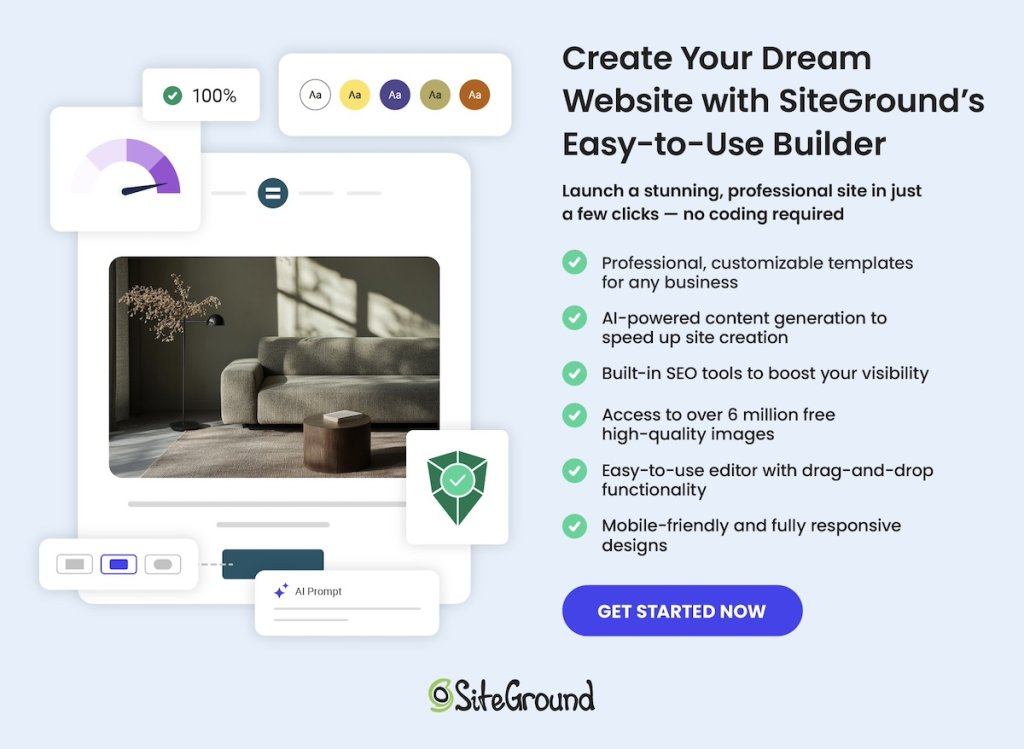


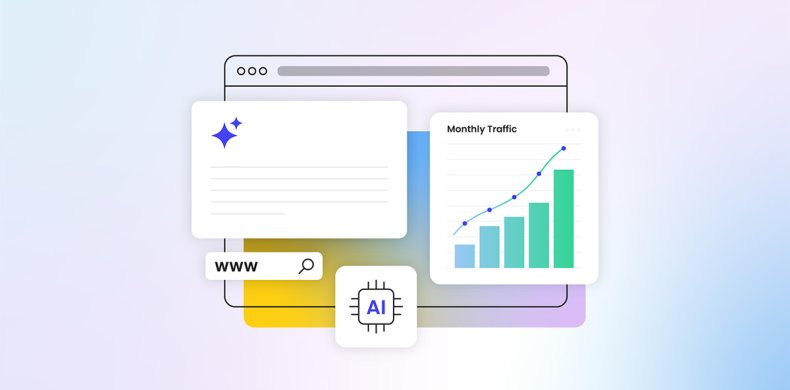
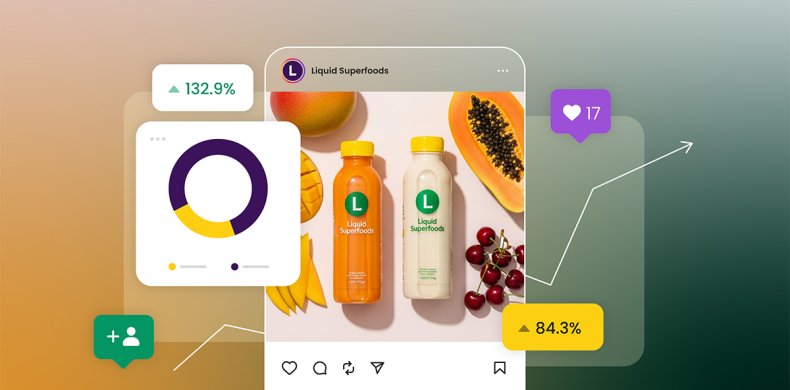
Comments ( 0 )
Thanks! Your comment will be held for moderation and will be shortly published, if it is related to this blog article. Comments for support inquiries or issues will not be published, if you have such please report it through our official channels of communication.
Leave a comment
Thanks! Your comment will be held for moderation and will be shortly published, if it is related to this blog article. Comments for support inquiries or issues will not be published, if you have such please report it through our official channels of communication.